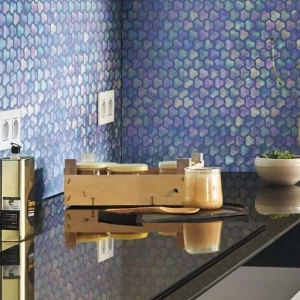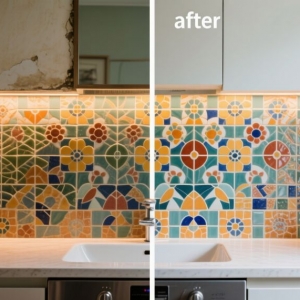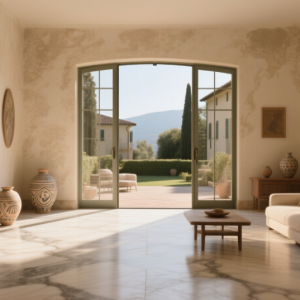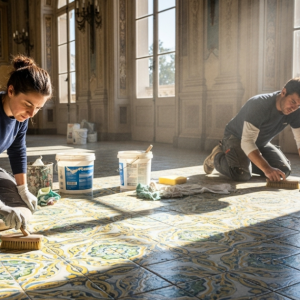A kitchen backsplash does more than enhance a room—it protects it. From splattered grease to steaming pots, it takes the brunt of cooking’s chaos. Italian tiles turn this practical surface into a statement of style and strength.
Italian kitchen tiles are designed to endure the demands of a busy kitchen—heat, moisture, and constant cleaning—while looking as good as the day they were installed. But not all tiles are equal. A stunning sample might not hold up in a real kitchen. Here’s how to pick one that will.
Why Backsplashes Are More Than Decor
A backsplash is a kitchen’s first defense. Cooking sends oil, sauce, and water splashing onto walls. Without a proper barrier, stains, peeling paint, or mold can take over. Italian tiles provide a durable, wipeable surface that handles the mess with ease.
But a backsplash also sits at eye level, making it a focal point. A poorly chosen tile can disrupt the kitchen’s flow, while the right one ties the space together, creating harmony and warmth.
The Italian Tile Difference
Italian tiles carry a legacy of craftsmanship. For centuries, Italy has perfected the art of tile-making, blending beauty with precision engineering.
Italian kitchen tiles stand out for:
- Porcelain or high-grade ceramic: Porcelain’s density makes it ideal for resisting water and stains, while ceramic is easier to install yet still robust.
- High-temperature firing: This process ensures tiles resist cracking or warping under stress.
- Distinctive aesthetics: Italian tiles feature nuanced glazes and textures, avoiding the flat, mass-produced look.
Their earthy tones—soft beiges, muted blues, or warm greys—feel timeless, complementing any kitchen’s lighting and mood.
Selecting a Style That Endures
Tile trends are fleeting—one season it’s geometric patterns, the next it’s high-shine finishes. A backsplash should outlast them all. Italian tiles excel with classic designs, like simple squares with handcrafted edges or subtle glazes, that stay relevant for decades.
Modern Italian tiles also cater to minimalist tastes with sleek lines and matte finishes, all made with premium materials. Whether your kitchen is cozy or contemporary, there’s an Italian tile that fits without feeling trendy.
Installation: The Critical Step
Even the finest Italian tiles can fail with poor installation. Unsealed grout invites stains. Misaligned tiles trap dirt or crack over time. Low-quality adhesives lead to loose tiles.
Handmade Italian tiles, with their unique imperfections, demand a skilled installer to showcase their beauty. Details like clean countertop transitions, precise outlet cuts, and seamless corners elevate the result. Hire a pro who knows their craft to match the tile’s quality.
Beyond the Basics
Most backsplashes stop at the cabinets, but you can go further. In kitchens without upper cabinets, run Italian tiles to the ceiling for a clean, cohesive look. Extra height behind the stove protects against heavy splatter. Tiling around windows can make the space feel brighter and more open.
Consider subtle color or texture—a soft olive or faded navy adds character without dominating. For maintenance, matte or textured tiles hide fingerprints better than glossy ones, especially in well-lit kitchens.
What to Avoid
- Stick to one tile style and grout color for a unified look.
- Always seal grout, even with pre-sealed tiles.
- Tile the full splash zone—partial coverage leaves walls vulnerable.
Final Thought
A great backsplash blends into your kitchen’s rhythm, handling daily wear while quietly elevating the space. Italian kitchen tiles offer that rare combination of durability and beauty, built to last through years of cooking and cleaning.
Choose with intention, prioritizing what feels right for your home over passing trends. With the right Italian tiles, your backsplash becomes more than a feature—it becomes a foundation.











